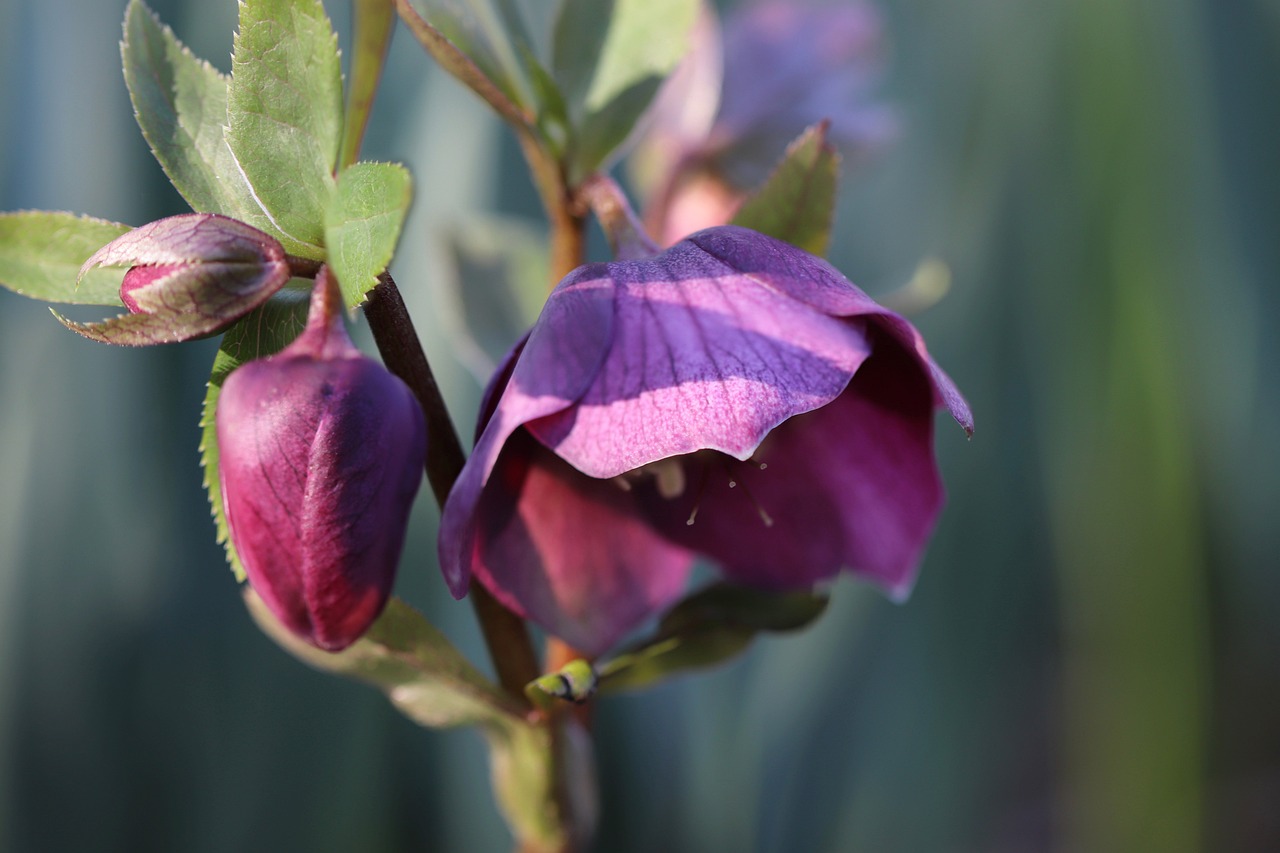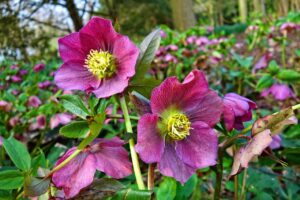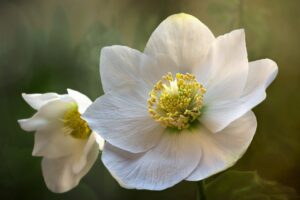Hellebore
Overview
The Hellebore, also known as Helleborus orientalis, sparkles in the late winter garden with its rose-like blossoms. This charming perennial adds a splash of color when most plants are dormant, thriving in well-drained soil and cooler conditions. Though primarily ornamental, the Hellebore’s unique appeal lies in its intriguing cup-shaped flowers and contrasting yellow stamens, making it a cherished addition to a garden’s off-season display.

Characteristics
Known for its late winter blooms, nodding cup-shaped flowers with contrasting yellow stamens, and resilience in well-drained, organically rich soil.
Region
The Hellebore plant is commonly found and grown in Europe and Asia, and in temperate regions of the Northern Hemisphere.
Natural Habitat
In the wild, Hellebore plants are commonly found in woodlands and on mountainous meadows.
Cultivation
Prefers partial to full shade, requires consistent but moderate watering in well-draining, rich, and moist soil, with a pH leaning towards alkaline to neutral.
Uses and Benefits
Hellebores dazzle as ornamental plants, their rose-like blooms piercing through the chill of late winter to signal the approach of spring. With their nodding cups of petals surrounding a burst of sunny stamens, they offer a much-needed splash of color when most gardens are still asleep4. More than just eye candy, their resilience against cold and evergreen foliage makes them an enduring gem in the garden. Though specific medicinal or culinary uses aren’t commonly cited, in historic times, hellebores were used in various ways, but due caution is advised as parts of the plant are toxic if ingested2. Today, their value rests predominantly in their ability to brighten shadowy corners of the garden, offering visual delight and hope of warmer days to come.

Cultivation Tips
Growing the beautiful Hellebore is a joy, especially when you see those rose-like blooms in the chill of late winter. Begin by choosing a spot where the soil is rich with organic matter; think compost or leaf mold to give it that extra boost of nutrients1. Ensure the soil is well-draining to avoid any waterlogging issues. A pH that’s more Alsatian than acidic—neutral to alkaline—is what you’re aiming for.
When you’re ready to plant, be gentle with the roots. Carefully space out where to split the clump, aiming for at least 10 inches from the parent plant to ensure you don’t harm the root system3. It’s like real estate; location is everything. Once settled in, your Hellebore will not only contribute beauty but resilience to your garden for many winter seasons to come. Remember, a bit of watchfulness for grey mold will keep them thriving2.
Seasonal Considerations
When the chilly air still lingers and much of the garden sleeps, the Hellebore makes its graceful entrance. Flourishing in the late winter, these hardy plants add a welcome splash of color when the landscape is otherwise barren.
Planning for their bloom time is crucial; ensure they’re well-established before the cold sets in. This timing allows them to muster enough energy to unfurl their blossoms just when the light begins to stretch longer across the days and most other plants are yet to awaken4. The Hellebore is not just a plant—it’s a herald of the coming spring, a beacon of growth amidst the frost.

Issues and Troubleshooting
Hellebores, enchanting as they are, can face the threat of grey mold, also known as Botrytis cinerea2. This sneaky fungus loves to devour plant tissue, leaving a trail of fuzzy, grey-brown mold and causing parts of your beloved plant to wilt and perish.
To combat this, practice good sanitation by regularly removing and disposing of any fallen leaves or dead plant material. Ensure adequate air circulation and avoid overwatering, as damp conditions can invite this unwanted guest. If the mold persists, applying a fungicide can be a necessary step to protect your plant and keep it thriving.
History and Folklore
Steeped in lore and shrouded by the mists of time, the Hellebore plant carries with it a tapestry of tales from the ancient world. It was once believed to have the power to ward off evil spirits, and in medieval gardens, it played the part of a protective charm4. Greek and Roman cultures also endowed Hellebore with a place in their healing arsenals, although its use was precarious due to its toxic properties4.
In the realm of myth, Hellebores are often associated with witches and sorcery, a testament to their mystical aura and potent biochemical makeup. It is said that sorcerers of old would use the plant both in the creation of potions and to summon animals from the wild. With such a mysterious background, it’s no wonder that Hellebore continues to captivate the imagination of gardeners and history buffs alike.
References
1. “A basic guide for the growth and care of Hellebore plant.” Houseplant Central. https://houseplantcentral.com/hellebore/
2. “Hellebore – Wikipedia.” Wikipedia. https://en.wikipedia.org/wiki/Hellebore
3. “How to Plant, Grow, and Care For Hellebore – Epic Gardening.” Epic Gardening. https://www.epicgardening.com/hellebore/
4. “Helleborus orientalis – Plant Finder – Missouri Botanical Garden.” Missouri Botanical Garden. https://www.missouribotanicalgarden.org/PlantFinder/PlantFinderDetails.aspx?kempercode=d100
Image Credit: Nennieinszweidrei
Image Credit: MabelAmber
Image Credit: angelinaelv
Nicolas Duval
Nicolas is a passionate advocate for nature and the art of wildcrafting. His dedication shines through in Wildcraftia, a website he meticulously crafted to serve as a haven for nature enthusiasts worldwide. Driven by a deep appreciation for nature’s connection to humanity, Nicolas embarked on his journey in 2011 with SmokableHerbs, a platform showcasing his love for nature’s bounty. Building upon this foundation, he established Smokably, a thriving online store offering premium herbs and blends to a global audience.
